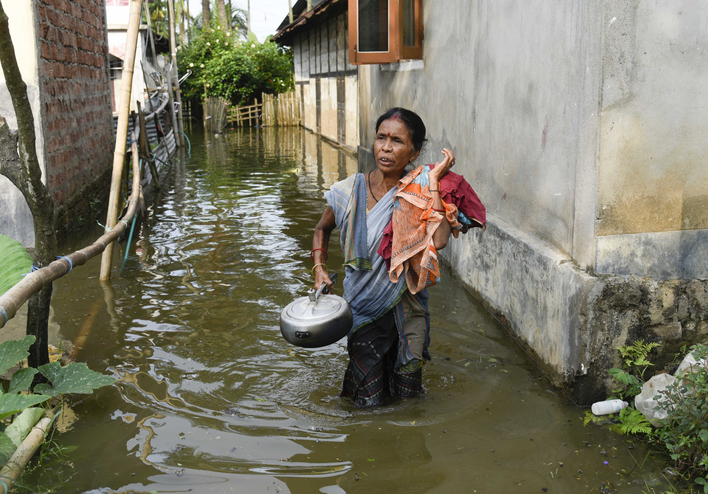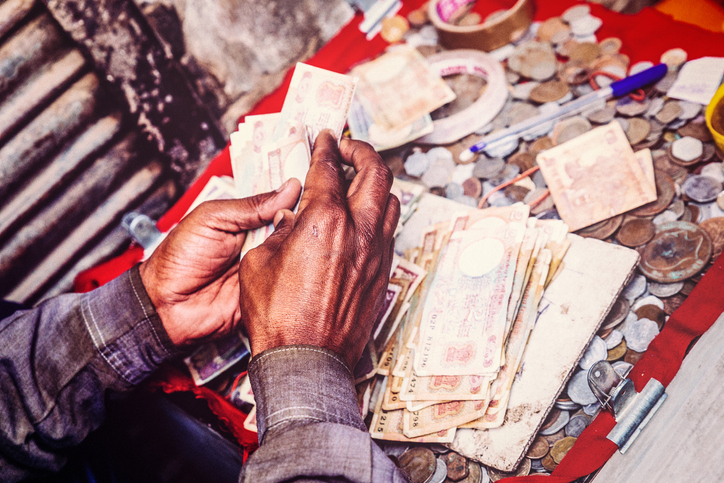Over 40% of the world’s population has no mobile access to the internet, which limits their access to critical job opportunities, health advice, educational content and government resources. To ensure no one is left behind in our increasingly connected world, we must understand the barriers and enablers to meaningful connectivity.
Mobile internet delivers major economic benefits, reduces poverty, and transforms lives. However, 43% of the global population – 3.4 billion people – remain unconnected. The problem is not the availability of broadband. Most people who don’t use mobile internet live in areas with mobile broadband. This ‘usage gap’ represents 38% of the world, or 3 billion people.
Connectivity varies hugely within and between regions and countries. Ninety-five per cent of the unconnected reside in low- and middle-income countries, where mobile phones are the primary gateway to the internet. In this blog, I explore five factors that explain the mobile internet usage gap to help guide policies that ensure more people can benefit from the online world.
- Affordability
Affordability of internet-enabled devices and data plans is critical for increasing mobile internet adoption in low- and middle-income countries. In most of these countries, the cost of mobile devices and data remains prohibitively high, making regular internet usage a luxury rather than a necessity.
A recent report on the State of Mobile Internet Connectivity shows that 41% of 129 low- and middle-income countries have yet to meet the Broadband Commission’s affordability target which states that entry-level broadband should cost less than 2% of monthly Gross National Income per capita by 2025. Notably, over half the countries in sub-Saharan Africa, which account for a quarter of the unconnected population, have failed to meet this affordability goal. When considering the poorest 40% of the population, 66% of low- and middle-income countries did not meet the target.
This affordability challenge is compounded by the fact that entry-level smartphones, often the sole gateway to mobile internet in low- and middle-income countries, remain financially out of reach for many. An entry-level device costs 16% of the average monthly income across low- and middle-income countries, equivalent to 40% of income for the poorest 40%. For the poorest 20%, the cost rises to 55% of monthly income. In sub-Saharan Africa, an entry-level device costs 95% of the average monthly income for the poorest 20%.
- Knowledge and digital skills
Knowledge and digital skills are critical for adopting mobile internet. Around one fifth of adults in low- and middle-income countries are unaware of mobile internet and its benefits, including some who already own a mobile device. Those more likely to report this barrier tend to be women and those living in rural areas. Structural inequalities disproportionately affect these groups’ access to quality education and opportunities to learn digital skills.
Without essential digital skills, people struggle to navigate online platforms, limiting their access to critical information and services. Health advice, educational content, and government resources remain out of reach. This digital divide exacerbates existing inequalities, as those without digital skills miss out on job opportunities, freelance work, and online marketplaces.
Civic participation also decreases, as digital literacy empowers citizens to engage civically, access government services, and participate democratically. Additionally, remote learning relies heavily on digital skills. Students without them struggle to access online educational resources, which perpetuates educational disparities.
- Perceived relevance
Many people don’t fully understand mobile internet’s benefits for their lives. This lack of awareness is connected to whether people see mobile internet content, apps or services as personally meaningful. When people don’t see personal relevance, they are less likely to explore and use the digital world.
This also reflects underdeveloped local digital ecosystems that lack content, products and services tailored to users’ needs. For instance, around 52% of website content is only available in English even though only about 20% of the global population speaks the language. In addition, just 9% of website visits from African internet users are to local websites. Most (88%) visits from Africa are to US and EU websites.
The Mobile Connectivity Index highlights the importance of locally relevant content. It measures locally produced apps, content in local languages, and services for daily life, like news, entertainment, finance, e-commerce and government. The data shows a strong link between available, relevant content/services and mobile internet use. Sub-Saharan Africa lags in access to local content, signaling a need for a more inclusive digital landscape. Country scores range from 9.5 in South Sudan to 73.4 in Mauritius, with a higher score reflecting more accessible and locally relevant content.
- Safety and security
Concerns around safety and security, like online harassment, misinformation and fraud, stop people from having beneficial internet experiences. Safety issues are widespread in low- and middle-income countries as they confront cybersecurity challenges while pursuing digital goals. The latest Global Cybersecurity Index report shows varying scores and ranks reflecting differing commitments to security and areas for improvement in these countries. Key challenges include a lack of legal frameworks, technical measures, organizational structures, capacity building initiatives, such as training programs, and cooperation needed to address cyber risks.
Women are disproportionately affected since they’re more susceptible to harassment and abuse both online and offline. Also, women often have lower digital literacy and confidence, less control over devices and data, and more social and cultural barriers to online services. This creates fear, distrust and discomfort, hindering full use of digital opportunities. The International Telecommunication Union (ITU) estimates that women worldwide are 5% less likely than men to access the internet. This gender gap widens to 11% in the least developed countries.
- Access
Beyond coverage, mobile internet access has several requirements. Infrastructure like electricity enables access, as do devices and agent networks for purchasing data. In many countries, formal ID is essential to SIM registration.
Power access enables mobile devices, especially energy-intensive smartphones. In sub-Saharan Africa, just 50% of the population has access to electricity. The figure drops to 30% among rural communities. As a result, residents in these areas face significant challenges and expenses in reaching charging stations for their devices.
Networks of agents sell SIM cards, devices, and data at their kiosks on behalf of telecommunications companies. They also train customers in digital skills, especially early internet adopters. But women may encounter difficulties accessing these physical spaces due to factors such as social norms or safety concerns that ultimately restrict their freedom of movement and access.
Formal identification is a prerequisite for mobile subscriptions or mobile money services in 157 countries, underscoring its critical role in digital and financial inclusion. However, approximately 850 million individuals, predominantly in sub-Saharan Africa and South Asia, lack the necessary identification for accessing such services.
Conclusions
The time to reassess digital inclusion and prioritize user needs is now. Given persistent adoption gaps, policymakers must do more to address mobile connectivity barriers. These should be tackled holistically and collaboratively. Building an inclusive digital society extends beyond any sector, requiring unified action led by pro-active governments. Only through shared responsibility to accelerate adoption can we ensure that no-one is left behind in our connected world.






